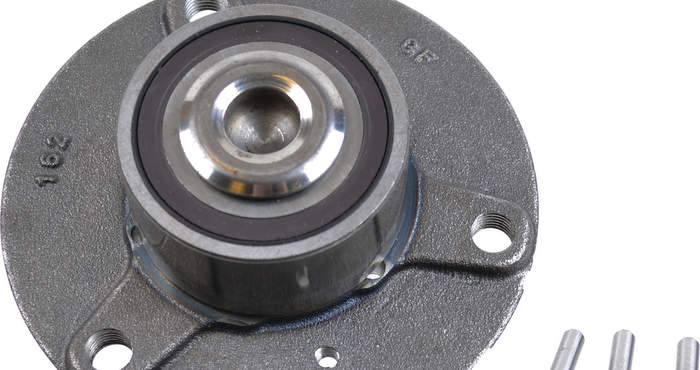Mercedes-Benz: Installation guidelines for Smart Car front wheel bearing
The typical solution for replacing the front wheel hub on a 2008-‘13 Mercedes-Benz Smart Car is a front wheel hub assembly, including a front wheel hub and knuckle. However, with a wheel hub-only solution for the Mercedes Smart Car, like the one offered by SKF, the installer can press the hub unit into the knuckle

Measuring Ball Joint Wear
Detecting and measuring wear in a ball joint is critical to ensuring the safety of a vehicle. When a ball joint fails, the driver loses control of the vehicle. This can result in damage not only to the suspension, but also the axle shafts, brakes and even the body.
Saab Tech Tip: Snap Or Pop Noise On Turns From The Front Suspension
A customer may complain of a snapping or popping noise on turns from the front suspension. This typically occurs on sharp turns such as a parking lot maneuver. Duplicate the concern to verify the noise is coming from the front suspension. Read on for recommendations and instructions.
Wheel Hub Bearing Q&A
What is a wheel hub bearing and why is it so important? Though you may never even see it, a wheel hub bearing unit is an important part of a car’s wheel assembly, enabling wheels to turn freely and playing a crucial role in the safety and handling characteristics of a vehicle. Comprised of precision-manufactured bearings, seals and sensors in one pre-assembled unit, a wheel hub bearing unit is critical to performance, from the smoothness of the ride, to fuel efficiency, to the integrity of anti-lock breaking systems (ABS).
Hyundai Feature: Drivetrain Noises And Wheel Bearing Replacement
Don’t let customers lead you down the wrong diagnostic path. While wheel-bearing noise is one of the toughest problems for customers to describe, says Import Specialist Contributor Bob Dowie, it’s not unusual for it to come on so gradually that the customer may not even notice it until you mention it after an unrelated road test.
Wheel Bearing Torque Dos and Don’ts
While it may appear to be easier to use an impact wrench, it is not recommended. OEM and bearing manufacturers always recommend using a torque wrench for installation. During removal, an impact wrench can damage the axle nut threads and shock the CV joints. It can also create a false sense of security when adjusting a nut or bolt, which may be under or over torqued.
Why Bearings Fail
The inside of a bearing can be a hot place. When a bearing is cooling off, the contracting metal, air and lubricant can create a vacuum that is hopefully held by the seals. If the seals are worn and can’t hold the vacuum, the bearing or sealed hub unit will suck in outside air, debris and water. In some parts of the country that use salt on the roads, it is almost as bad as ocean water on wheel bearings.
SKF Launches Social Media Program, Providing Increased Access To Technical And Product Information
SKF has launched a Twitter page and YouTube channel to provide automotive and heavy-duty technicians and fleet managers with an additional source of SKF product and technical information.
GM Tech Tip: Growl Noise Caused By Axle Nuts
To diagnosis the noise, re-torque the existing front axle shaft nut to 162 ft/lbs and test drive the vehicle. If the noise is eliminated, replace both front axle nuts with the updated part (P/N: 10257766). On vehicles equipped with the police package, add an additional Nord-Lock.
Tech Tip: Generation 1 Wheel Bearings With Integrated ABS Tone Ring
The front wheel bearings listed in this Tech Tip all share a unique design feature. They are all double-row angular contact with a split inner ring. The distinctive feature on these bearings is that one of the two seals on the bearing has a built-in magnetic impulse wheel. Caution should be taken to make sure that the seal with the ABS impulse ring is installed in the correct direction.
TECH TIP: WHEEL BEARING HUB AXLE NUT TORQUING
Putting the proper torque on the center nut sets the preload for the bearing and keeps the bearing from separating while in operation. The torque specification for this center nut is critical to the performance and longevity of the hub.
Active Wheel Speed Sensor Diagnostics
There are two “types” of sensors generally found on the modern car – the passive speed sensor and the active speed sensor. They both perform the same function, but work entirely different. The passive speed sensor uses a magnet with fine copper wire wrapped around it to create its own alternating magnetic field. The polarity changes from positive to negative as the tone ring passes by the magnetic field. This frequency changes with wheel speed.
